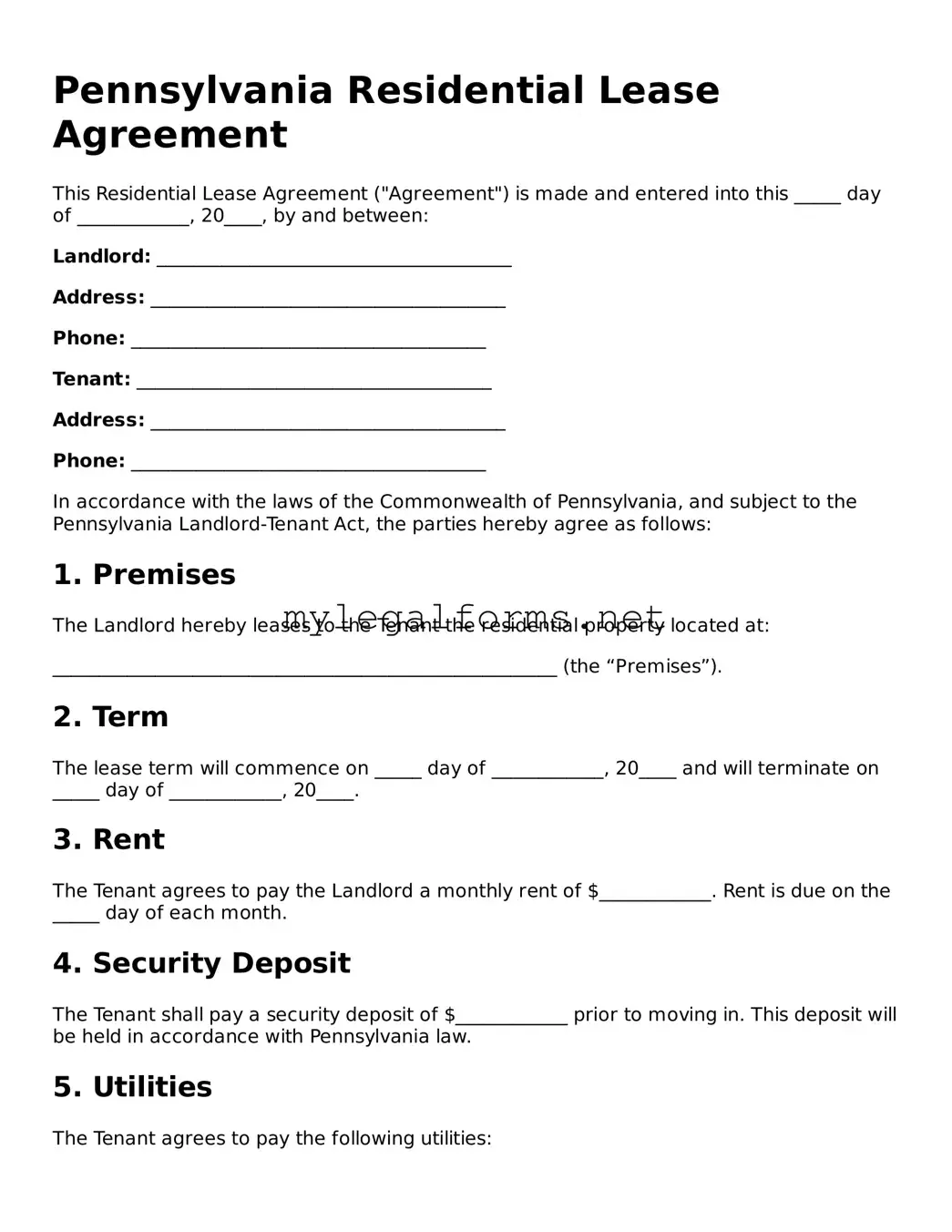Pennsylvania Residential Lease Agreement
This Residential Lease Agreement ("Agreement") is made and entered into this _____ day of ____________, 20____, by and between:
Landlord: ______________________________________
Address: ______________________________________
Phone: ______________________________________
Tenant: ______________________________________
Address: ______________________________________
Phone: ______________________________________
In accordance with the laws of the Commonwealth of Pennsylvania, and subject to the Pennsylvania Landlord-Tenant Act, the parties hereby agree as follows:
1. Premises
The Landlord hereby leases to the Tenant the residential property located at:
______________________________________________________ (the “Premises”).
2. Term
The lease term will commence on _____ day of ____________, 20____ and will terminate on _____ day of ____________, 20____.
3. Rent
The Tenant agrees to pay the Landlord a monthly rent of $____________. Rent is due on the _____ day of each month.
4. Security Deposit
The Tenant shall pay a security deposit of $____________ prior to moving in. This deposit will be held in accordance with Pennsylvania law.
5. Utilities
The Tenant agrees to pay the following utilities:
- Electricity
- Gas
- Water
- Sewer
- Trash Removal
6. Maintenance and Repairs
The Tenant shall keep the Premises in good order and condition. The Landlord shall be responsible for major repairs unless caused by the Tenant's misuse.
7. Alterations
The Tenant must obtain written consent from the Landlord before making any alterations to the Premises.
8. Default
If the Tenant fails to pay rent or otherwise breaches this Agreement, the Landlord may terminate the lease in accordance with Pennsylvania state law.
9. Governing Law
This Agreement shall be governed by the laws of the Commonwealth of Pennsylvania.
10. Signatures
By signing below, both parties agree to the terms of this Lease Agreement.
Landlord Signature: _______________________________ Date: ____________
Tenant Signature: _______________________________ Date: ____________
